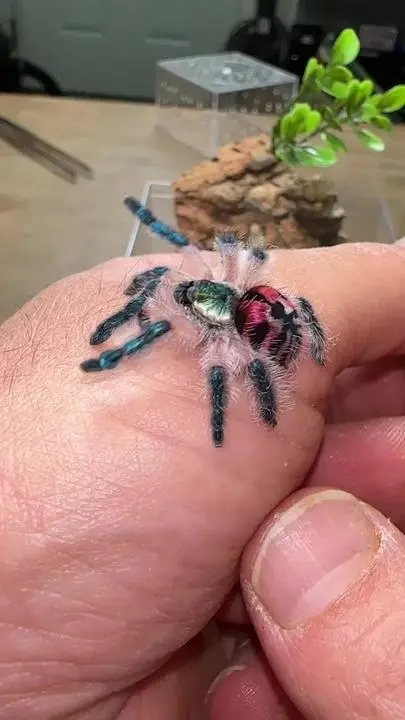A newly published study sheds light on the intriguing ecological partnerships and evolutionary adaptations of tarantulas. Contrary to their fearsome reputation, these spiders often have beneficial relationships with amphibians, reptiles, and even army ants—despite the latter being known predators of spiders. The researchers propose that the dense hair on tarantulas may have evolved as a defense against these aggressive ants.
The study, conducted by an international team, involved a comprehensive review of literature and observations of tarantula interactions with various species. Among their discoveries is the first reported association between tarantulas and snakes, whip spiders, and harvestmen, along with over 60 new instances of tarantulas partnering with amphibians across ten countries.
According to Alireza Zamani, lead author of the study from the University of Turku, Finland, these interactions often prove mutually beneficial. “Frogs and toads that seek refuge in tarantula retreats gain shelter and protection from predators. In return, they help control insect populations that could harm the spider, its eggs, or its young. It seems that tarantulas may not be as menacing as their reputation suggests,” Zamani notes.
One of the study’s most significant findings is the proposal of a new hypothesis regarding the evolution of tarantula hairiness. The researchers suggest that the thick, hairy coats of tarantulas might serve as a defense against predatory ants. Zamani explains, “Army ants generally avoid attacking both adult tarantulas and their spiderlings, which is unusual given their tendency to prey on various arthropods. Observations show that the ants enter tarantula burrows to scavenge and clean, which benefits the spiders. The few attempts by ants to attack are thwarted by the spider’s protective hair.”
The study also highlights how tarantulas with dense hair might be less vulnerable to ant attacks. Those with sparser hair are more exposed to predation. Furthermore, the researchers observed a unique escape tactic used by New World arboreal tarantulas: a female Avicularia hirschii in Peru was seen clinging to a leaf’s edge to avoid army ants.
Additionally, the researchers speculate about a potential chemical defense mechanism. They suggest that tarantulas might have specialized epidermal glands that produce substances repelling predators. “We’ve noticed that animals with a keen sense of smell, like cats and dogs, often recoil after sniffing a tarantula. This reaction might be due to secretions from the spider’s slit-like epidermal glands,” Zamani says.
While further research is needed to confirm the chemical defense hypothesis, this study represents a major advancement in understanding tarantula behavior and their evolutionary adaptations.
